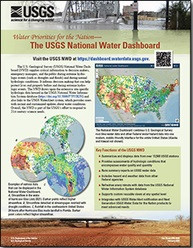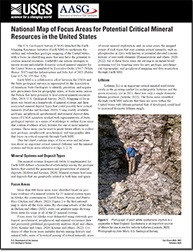
Product Details
- Product Number
- 534161
- Series
- FS-2022-3008
- Scale
- NO SCALE
- Alternate ID
- FS-2022-3008
- Authors
- COOP ALASKA DIVISION GEOLOGICA
- Version Date
- 03/01/2022
- Countries
- USA
- Media
- WEB ONLY
- Format
- WEB ONLY
Additional Details
- Description
-
Geospatial Analyses Delineate Lode Gold Prospectivity in Alaska
This product is not available for order, it can only be downloaded from here (click on image) or within the Publications Warehouse at https://pubs.er.usgs.gov/publication/fs20223008
First posted May 18, 2022
For additional information, contact:
Director, Alaska Science Center U.S. Geological Survey
4210 University Drive
Anchorage, Alaska 99508
Abstract
Comprehensive, data-driven geographic information system analyses utilize publicly available lithologic, geochemical, geophysical, and mineral occurrence datasets to delineate gold resource potential in Alaska. These prospectivity analyses successfully identify areas containing known lode gold occurrences, expand areas of high prospectivity around known occurrences, improve the precision of delineation of areas of high prospectivity for lode gold deposit types, and determine new areas that may have potential for gold deposits. These analyses indicate prospectivity in areas where exposure is good and in areas where exposure is poor, which provide useful guidance for land-use decisions and exploration strategies.
- Survey Date
- 2022
- Print Date
- 2022
- Height In Inches
- 11.000
- Length In Inches
- 8.500
- Languages
- English





